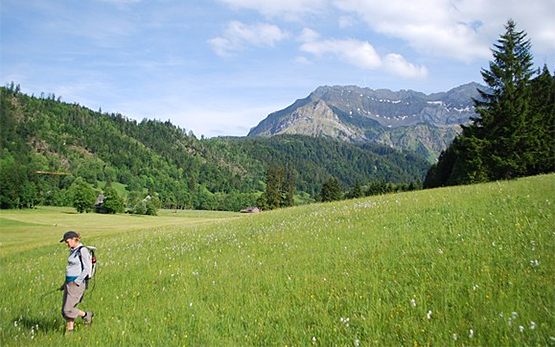Switzerland is a hotspot of genetic diversity for important forage plants. These plants occur spontaneously in a number of widely varying habitats, where they adapt to environmental conditions through natural selection. We examine how location and land use affect genetic diversity within important clover and grass species.
The preservation and sustainable use of plant genetic resources is a research task of national importance. Genetic diversity within forage plant species represents the bottom rung of biodiversity and contributes substantially to the long- term stability and adaptability of meadow ecosystems. Although used successfully within the framework of breeding programmes, genetic diversity has so far scarcely been described. This project pursues the following objectives:
- Recording genetic diversity within and between natural populations of important forage- plant species by means of morphological, agronomic and molecular- genetic traits.
- Recording the variability of location site and land- use factors on land surfaces coming under consideration for the effective in- situ preservation of important forage- plant species.
- Compiling criteria for the selection of forage- plant populations with regard to deliberate ex- situ (as seed in gene banks) and in- situ (as a viable population in the natural location) preservation.
- Ensuring preservation and enabling sustainable use of selected genetic resources of forage plants.






